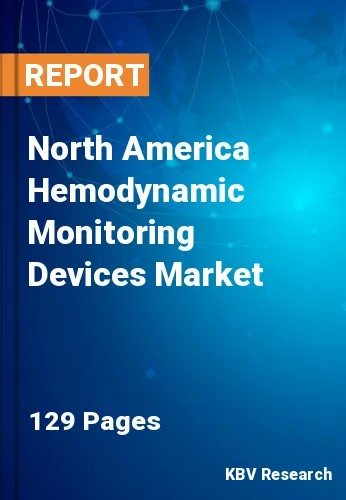The North America Hemodynamic Monitoring Devices Market would witness market growth of 4.8% CAGR during the forecast period (2023-2030). In the year 2019, the North America market's volume surged to 1036.6 thousand units, showcasing a growth of 6.5% (2019-2022).
Hemodynamic monitoring systems' advantages are becoming more widely known among healthcare professionals, and an increase in educational initiatives, training programs, and strategic partnerships between major market players and healthcare organizations, research centers, and technology firms supports market growth. Moreover, it is possible to distinguish between the relative severity of pulmonary and cardiovascular dysfunction contributing to hypoxemia using hemodynamic monitoring and oxygen transport assessment. This is crucial because treatment intended to improve pulmonary dysfunction (by increasing airway pressure) may negatively affect cardiac output and venous return.
Understanding the physiological changes during the transition to newborn life is crucial for adequately interpreting any hemodynamic problems that may arise during and after this phase. It is difficult for neonatologists to treat circulatory failure during the transition; problems can vary between extremely preterm newborns and infants because premature infants have undeveloped circulations, but term infants' circulatory systems can be defective. Therefore, as the circulation changes, the strategy should be used for certain pathophysiological diseases such as patent ductus arteriosus (PDA), hypotension, intraventricular hemorrhage, newborn hypoxia, severe growth restriction, and pulmonary hypertension.
In the US, millions of people suffer from respiratory illnesses. The number of Americans having asthma is more than 25 million, according to the US Department of Health and Human Services. Asthma hospitalizations can be avoided by reducing environmental triggers and ensuring patients receive the appropriate medications. By 2040, the senior population is expected to increase, accounting for over one-fourth of everyone. In 2019, there were over 10,000 centenarians, with 82% of those who were 100 or older being female. As a result, the adoption of hemodynamic monitoring devices is expected to increase in the region, which will aid in the expansion of the market.
The US market dominated the North America Hemodynamic Monitoring Devices Market by Country in 2022 and would continue to be a dominant market till 2030; thereby, achieving a market value of $550.3 Million by 2030. The Canada market is poised to grow at a CAGR of 7.1% during (2023 - 2030). Additionally, The Mexico market would exhibit a CAGR of 6.2% during (2023 - 2030).
Based on Product, the market is segmented into Monitors and Disposables. Based on System Type, the market is segmented into Non-Invasive, Minimally Invasive and Invasive. Based on End Use, the market is segmented into Hospitals, Catheterization Labs, and Others. Based on countries, the market is segmented into U.S., Mexico, Canada, and Rest of North America.
Free Valuable Insights: The Worldwide Hemodynamic Monitoring Devices Market is Projected to reach USD 1.9 Billion by 2030, at a CAGR of 5.4%
The market research report covers the analysis of key stakeholders of the market. Key companies profiled in the report include Edwards Lifesciences Corporation, GE HealthCare Technologies, Inc., Baxter International, Inc., ICU Medical, Inc., Masimo Corporation, Deltex Medical Group Plc., Sramek BioDynamics, Inc., Osypka Medical GmbH, Medtronic PLC, and Koninklijke Philips N.V.
By Product (Volume, Thousand Units, USD Million, 2019-2030)
By System Type (Volume, Thousand Units, USD Million, 2019-2030)
By End-use (Volume, Thousand Units, USD Million, 2019-2030)
By Country (Volume, Thousand Units, USD Million, 2019-2030)
Our team of dedicated experts can provide you with attractive expansion opportunities for your business.

